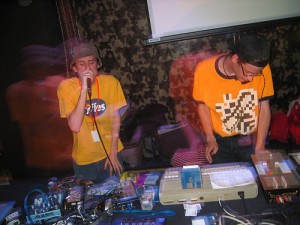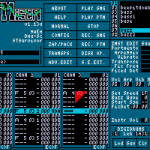This is the second part of our interview with gwEm, you can find the first part here.
LB – In the maxYMiser FAQ you make the comment that the other trackers available for the machine lacked in some way, I was curious which limitations encouraged you to start on maxYMiser.
gwEm – Well, there were 3 different trackers all doing something different, I wondered why.. then I read a deeply inspiring interview (note: links to myatari.net zip of May2003 issue which contains the interview) with the legendary Tao, which went into details about his techniques. I decided to put all the effects into one tracker.
LB – Did you develop maxYMiser in secret for a while or were you getting input from other Atari experts?
gwEm – I make most of my projects secret, since I don’t want to disappoint, maxYMiser was a big secret though. I got input just from Dma-Sc on the interface – he tried all the early versions, from the very first mock up. I asked him, since I am a big fan of his music style, he seemed interested in trying a new tracker out, too – he was one of the first to move to Triplex. After the first couple of releases I got advice from 505 instead, since Dma was busy. Except for those two guys, I didn’t really listen to anyone else. But they are, in my opinion, the best two musicians on the Atari ST demoscene.
LB – How did the ST community react to maxYMiser?
gwEm -Well, I released some stuff – firstly the song ‘maxYMise’ as a compo tune. ‘maxYMise’ didn’t do that well, which effected motivation. I realized then, its not all about fancy effects. Next thing was ‘The Phatt Demo‘



